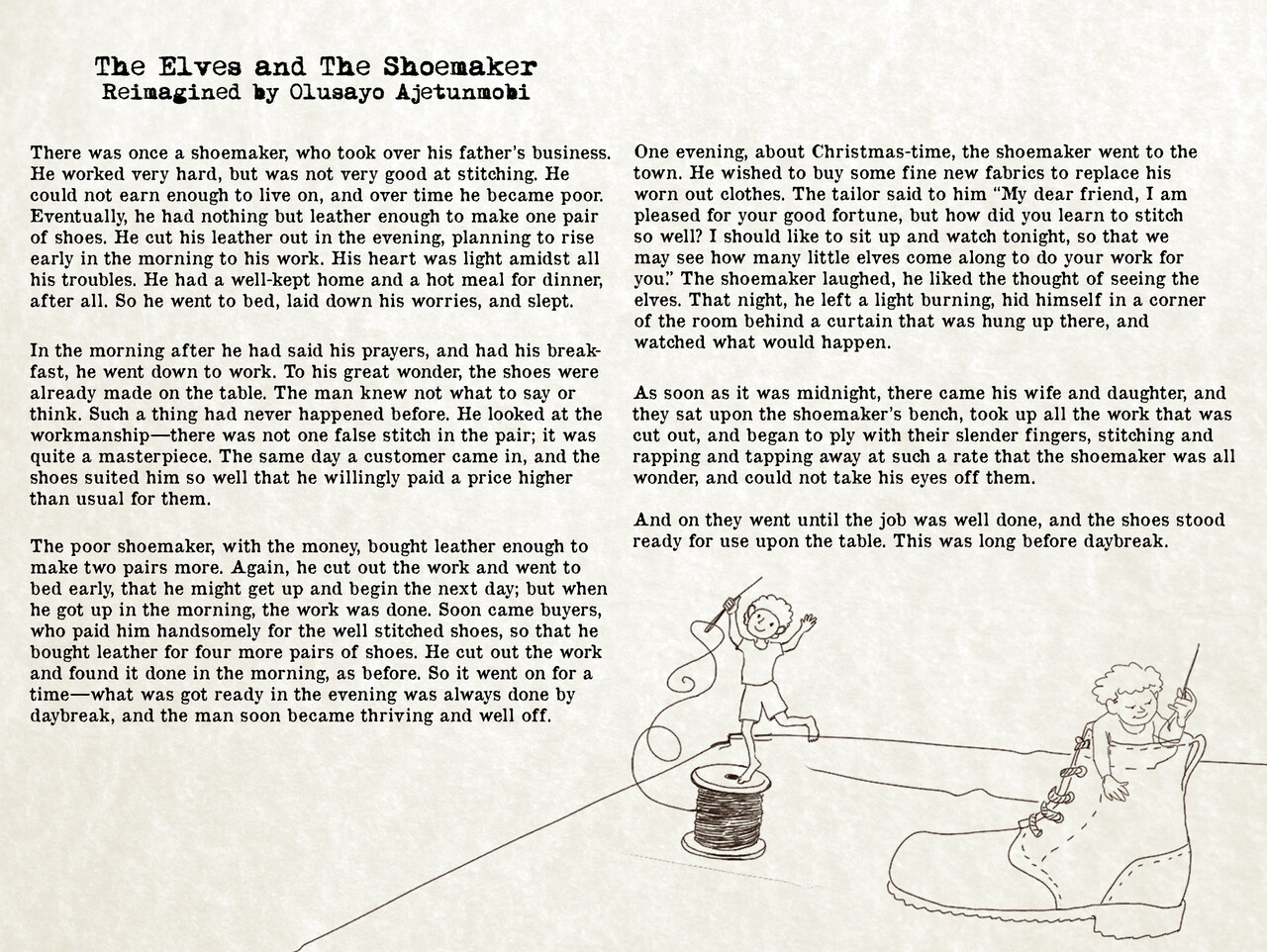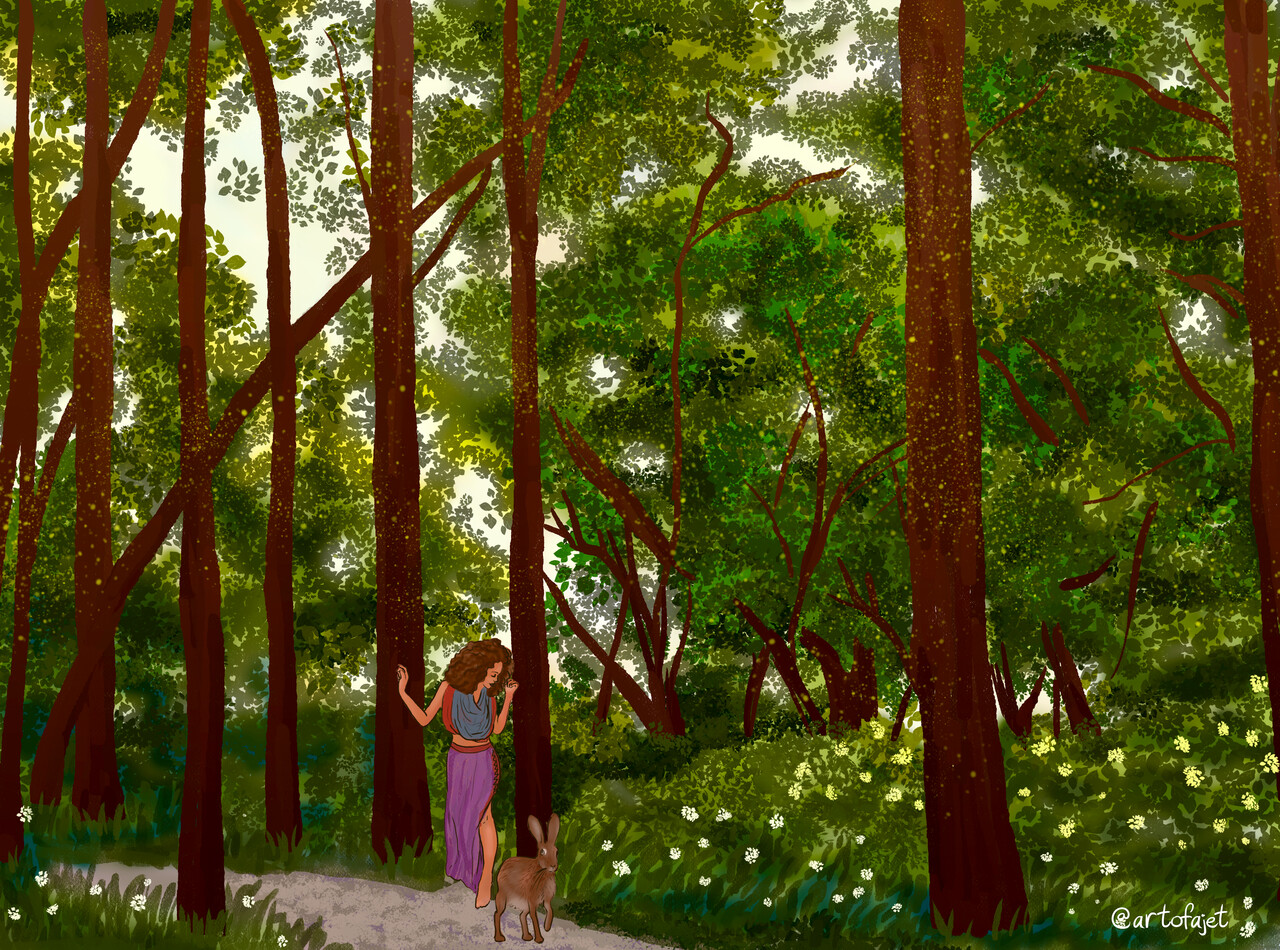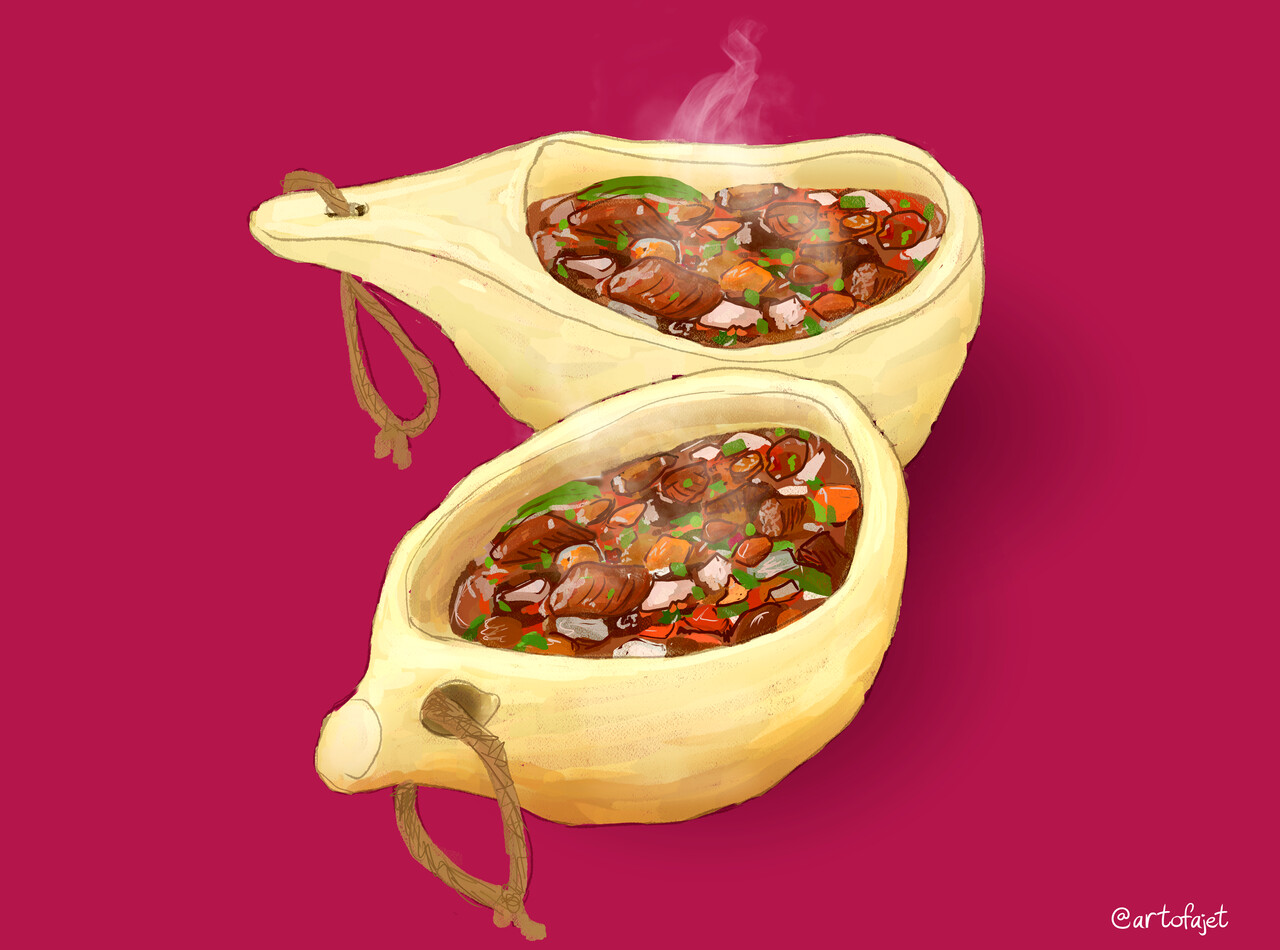One day the hare went to the house of the hunter who was away hunting.
He said to the hunter’s wife, ‘Come to my house and live with me; we have meat and vegetables everyday’.
The woman went with him. The hare took her deep into the bush, but when she saw the lair of the hare and had eaten grass with him and slept in the open with him, she was not satisfied.
‘I want to go back’ she said.
The hare replied, ‘you came here by your own choice’.
The woman did not know the way in the bush. She tried to retrace her steps, but found herself back where she started, so she said to the hare ‘Come with me and I will cook a nice dinner’.
The hare took her to her house. Then she said ’Get me some firewood’.
The hare went to the forest and collected a load of firewood. The woman lit a fire and put a pot of water on it. Then she began to chop up vegetables. After a while she said to the hare, ‘see if the water is boiling’.
As the hare opened the pot to check, steam rushed his face. The woman pushed the hare into the pot and put the lid back on.
When the hunter came home she said ‘I made meat and vegetables for dinner.’
The hunter never knew what happened.
Credit: The Hare is a Swahili folktale, featured in 'Angela Carter's Book of Fairy Tales'.
Illustrations copyright © Olusayo Ajetunmobi.




